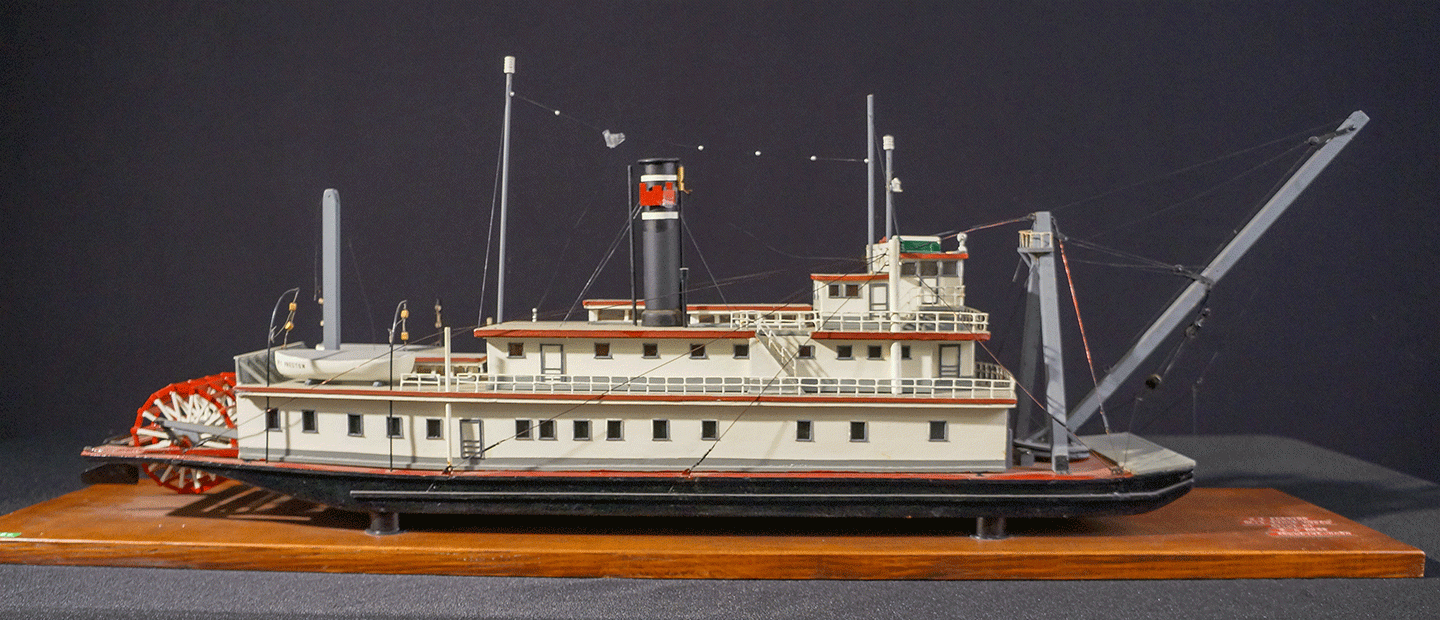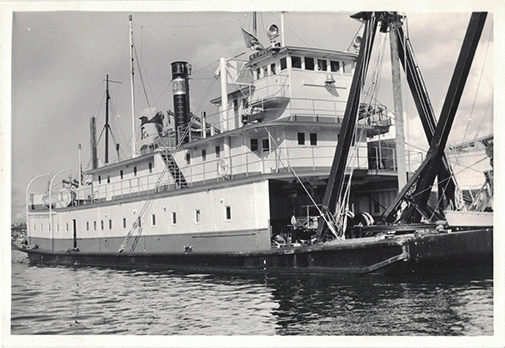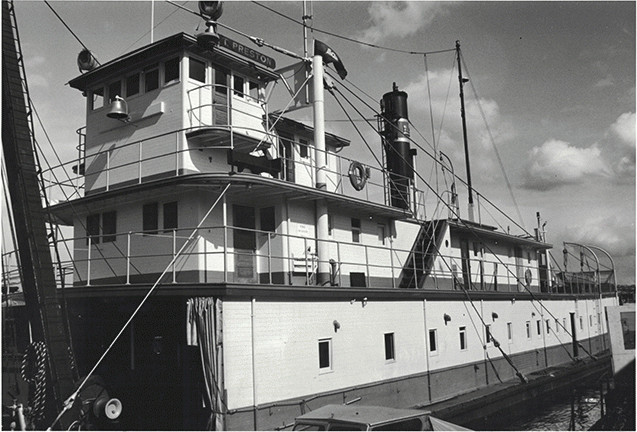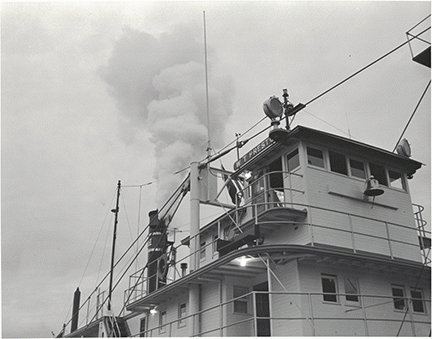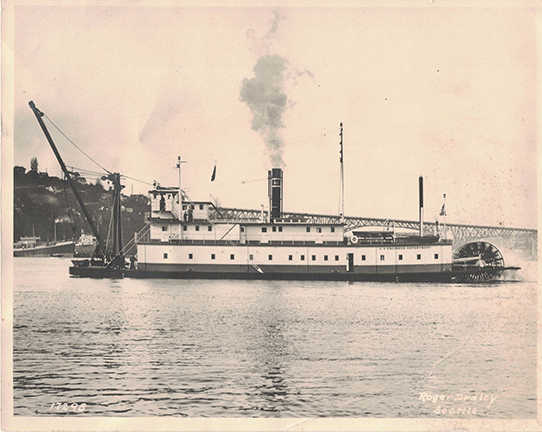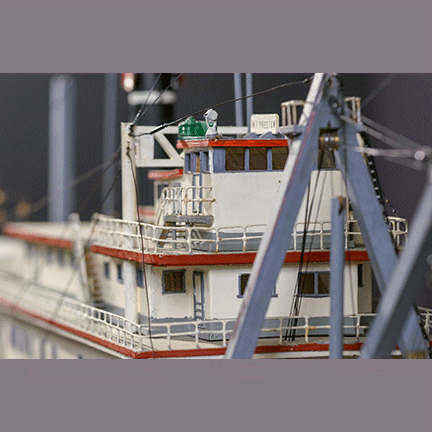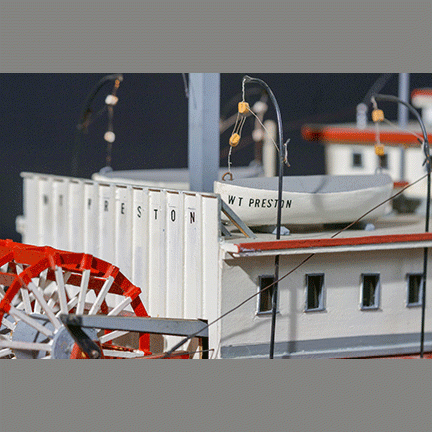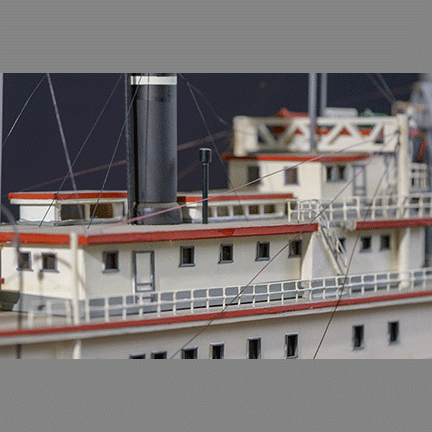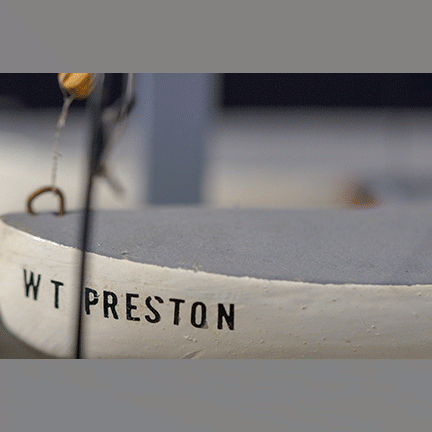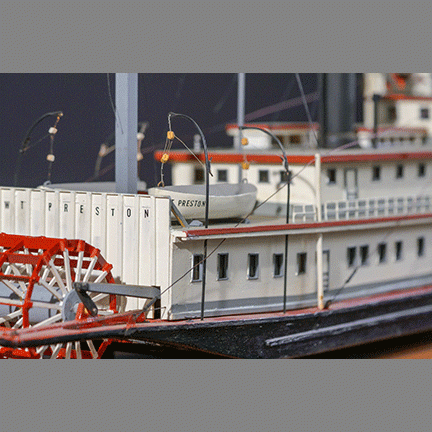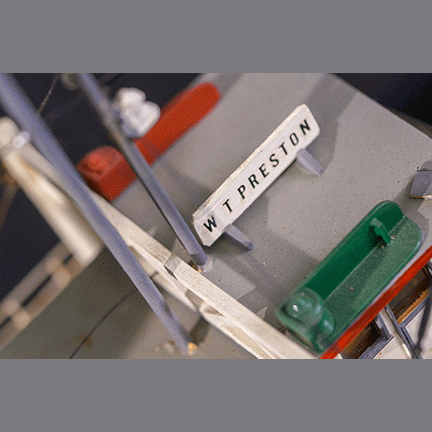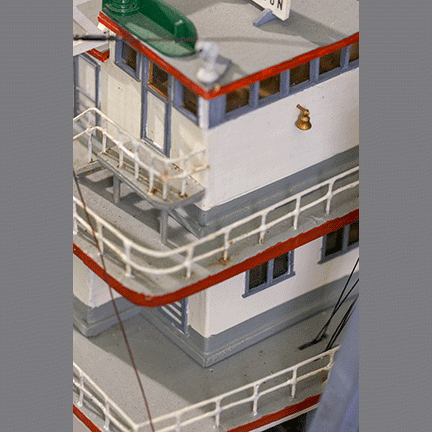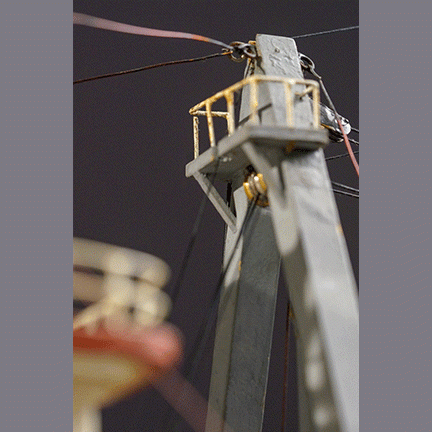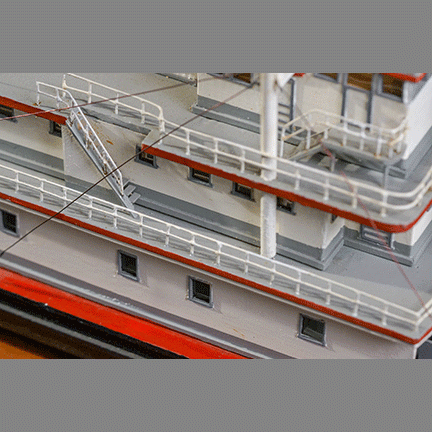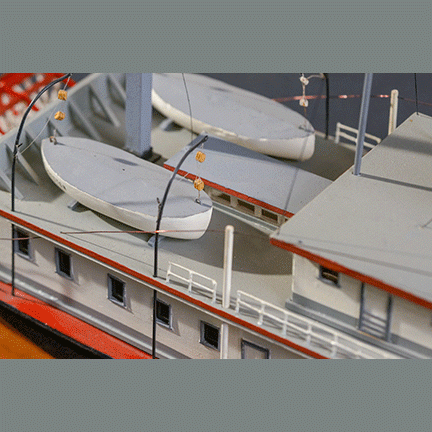History of the W.T. Preston
The steam driven, sternwheel W.T. Preston was a snagboat for the U. S Army Corps of Engineers and a fixture in Puget Sound history. Her mission was to keep the waters and tributaries navigable and free of obstructions. Removing stumps, drift and deadheads, her task was daunting. Her crew worked 11 months a year from Olympia to the Canadian border. Considered a choice service, turnover in the W. T. Preston was rare – she only had 5 captains in her 95 year service.
In the tradition of the W. T. Preston’s forebearers, the first snagboat was the Skagit, which was commissioned in 1885. After Skagit came the Swinomish in 1914, the first vessel named W. T. Preston in 1929, and the second W. T. Preston built in 1939. The same steam engines that propelled her in 1914 were the ones with which she ended her service in 1981. After her decommission, she was designated by the Federal Register as a “Historic Place” and dry docked as a museum ship to preserve maritime history.
Route: Puget Sound, Olympia to Canadian boarder
In service: 1939
Out of service: 1981
Fate: Museum ship at the Maritime Heritage Center Anacortes, Washington www.anacorteswa.gov
Type: Paddlewheel steamer, tug
Displacement: 490 Gross Tons
Length: 163’6” (49.83m)
Beam: 34’8.5” (10.579m)
Draft: 3’8” (1.12m)
Installed power: 180 psi (1,200 kPa) Firetube boiler 2 x 150 hp (110kW) reciprocating steam engines
Propulsion: Sternwheel
Speed: 9 knots (17 km/h; 10 mph) (cruise) 12 knots (14 mph) (max)
Model:
Title: W. T. Preston
Description: US Corps of Engineers inland water snagboat.
Vessel type: Snagboat
Propulsion: Steamship
Material: Wood
Dimensions: H=17.5”, W=11.5”, L=42”
Photography by: C. Slettebak-Rood

